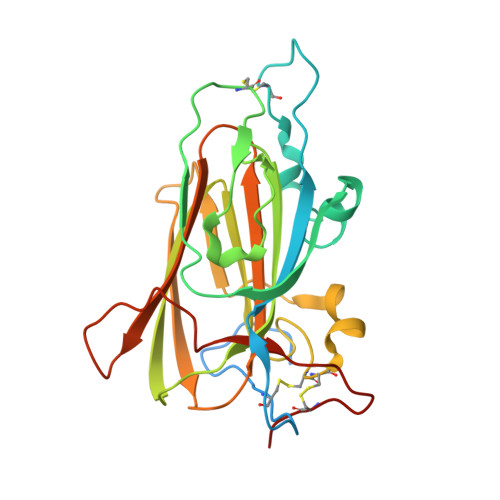Structural Hotspots Determine Functional Diversity of the Candida Glabrata Epithelial Adhesin Family
Diderrich, R., Kock, M., Maestre-Reyna, M., Rupp, S., Essen, L.-O., Moesch, H.-U.(2015) J Biol Chem 290: 19597
- PubMed: 26105055
- DOI: https://doi.org/10.1074/jbc.M115.655654
- Primary Citation of Related Structures:
4COU, 4COV, 4COW, 4COY, 4COZ, 4D3W - PubMed Abstract:
For host colonization, the human fungal pathogen Candida glabrata is known to utilize a large family of highly related surface-exposed cell wall proteins, the lectin-like epithelial adhesins (Epas). To reveal the structure-function relationships within the entire Epa family, we have performed a large scale functional analysis of the adhesion (A) domains of 17 Epa paralogs in combination with three-dimensional structural studies of selected members with cognate ligands. Our study shows that most EpaA domains exert lectin-like functions and together recognize a wide variety of glycans with terminal galactosides for conferring epithelial cell adhesion. We further identify several conserved and variable structural features within the diverse Epa ligand binding pockets, which affect affinity and specificity. These features rationalize why mere phylogenetic relationships within the Epa family are weak indicators for functional classification and explain how Epa-like adhesins have evolved in C. glabrata and related fungal species.
Organizational Affiliation:
From the Departments of Genetics and.

















